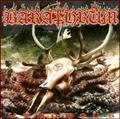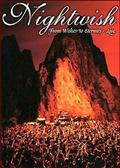PLUG-IN (FRA) - Hijack (2011)

Label : Auto-Production
Sortie du Scud : 22 septembre 2011
Pays : France
Genre : Metal Instrumental
Type : Album
Playtime : 9 Titres - 56 Mins
Mais comment font-ils ? PLUG-IN pour son premier album, se paie le luxe d’inscrire la participation de Ron Thal (GUNS N’ ROSES, BUMBLEFOOT), Mattias Eklundh (FREAK KITCHEN), Patrick Rondat, et j’en passe… pardon pour eux. Si Joe Satriani n’était pas retenu par CHICKENFOOT, il y aurait collé un solo bien senti.
A y fouiller de plus près, le dénominateur commun est Ron Thal, à plusieurs titres, au niveau de la musique de jeux vidéo, au niveau de concerts communs avec BUMBLEFOOT et FREAK KITCHEN.
Au niveau de la musique des jeux vidéo, car Mobo, membre originel de PLUG-IN avec Fanalo, composa la musique d’ « Ulim@te Race Pro ».
Au niveau des tournées, PLUG-IN assurant la première partie de BUMBLEFOOT, à Bordeaux en 2001. L’année suivante, Mobo et Fanalo, participent à la tournée française de notre sieur Ron « Bumblefoot » Thal. Ce dernier se voit affublé dans la presse de doux épithètes : génie dingue, hurluberlu, psychopathe. Un compliment lui est toutefois fait, celui de nouveau Zappa. Pas mal, il y a pire comme comparaison.
Plus tard, on retrouve à nouveau sur la route, l’équipe avec BUMBLEFOOT et FREAK KITCHEN.
Tout s’explique donc, et tous ces lascars se connaissant bien, doivent avoir plaisir à retravailler ensemble.
PLUG-IN ne choisit pas la facilité en se contenant dans le Metal Instrumental. Il suffit de se retourner pour constater que les fans ne sont pas légion à suivre ce style. Le genre est considéré comme trop confidentiel. On a tort, car au fil des festivals, les curieux découvrent de belles pépites, telles MONKEY 3, MY SLEEPING KARMA avec son Metal psychédélique relevé d’effets électroniques.
Parlons-en des effets électroniques, car PLUG-IN et le titre de son album Hijack sont des termes qui illustrent le monde des fichiers, logiciel, langage PHP, format ZIP… L’artwork, réalisé par Sam Shearon qui a, excusez du peu, travaillé avec MAIDEN, CRADLE OF FILTH,… accentue ce côté branché par le profil sombre d’un être humain hurlant, relié à une multitude de câbles…. à vous dégoûter de faire un BEP d’électricien.
Prévenu des dangers d’électrocution, c’est donc avec l’équipement de sécurité que je prends possession de Hijack.
L’instrumental a cette faculté de laisser libre cours à nos pensées. Pas de paroles, de thématique, vous invitant à suivre un chemin balisé par l’écriture du combo. La musique se pare tout naturellement des couleurs de l’état d’âme du moment.
Le premier titre « Danthägl » se targue tout de même, par son intro, de planter le décor des illustrations sonores des jeux vidéo, clin d’œil de Mobo et de Ron Thal, enchainant ensuite sur une interprétation énergique.
« Dropped » s’annonce avec une intro lourde, pesante, qui démontre par la suite, à l’image de tous les titres de cet opus, que nous sommes au royaume des guitar heroes. Si vous êtes en lévitation, je vous préviens quand même que l’outro du morceau vous réserve un arrêt brutal, bon pour une chute libre, mort subite.
Des titres comme « Hijack », « B.O.B », annoncent des ambiances multiples, aux arrangements plus fouillés, quelques colorations arabisantes, mélodiques, aériennes.
L’interprétation se fait tantôt prog, tantôt jazzy.
« Conkrete » se démarque par son intro, et un solo de Sylvain Coudret qui se décline sur une rythmique saccadée avec ses breaks, une structure que l’on retrouve aussi sur « Texas Instruments ».
Avec « Ron To The Hills », non, non, pas de cover de la vierge de fer, nous retrouvons une palette de guitaristes dont Ron Thal. Comme au feu d’artifices, on se croirait au final avec un tel tir de soli, tel les orgues de Staline. On assiste à un chassé-croisé de guitares qui ravira les tortionnaires du manche.
Mais passons par « Sevilla » avant de nous quitter, la fête n’est pas terminée avec Patrick Rondat qui lance le morceau avec un solo bien soutenu par Pierre Belleville à la batterie.
Après l’écoute de l’album, il faut aussi reconnaître que la section rythmique est efficace et infaillible, on pouvait faire confiance à Mobo.
Les spécialistes de tapping, de gap sweeping sont à leur affaire avec ce scud et peuvent se reconnaître, ou du moins se chercher dans les prestations des solistes invités, et dans ce monde d’initiés.
En résumé, et avec une formule à moitié inventée, on peut dire que PLUG-IN est un générateur de prismes musicaux aux ambiances guitaresques, cette appellation non contrôlée leur va comme un gant.
Ajouté : Lundi 30 Janvier 2012
Chroniqueur : Le Patriarche
Score :   
Lien en relation: Plug-in Website
Hits: 11826
|














